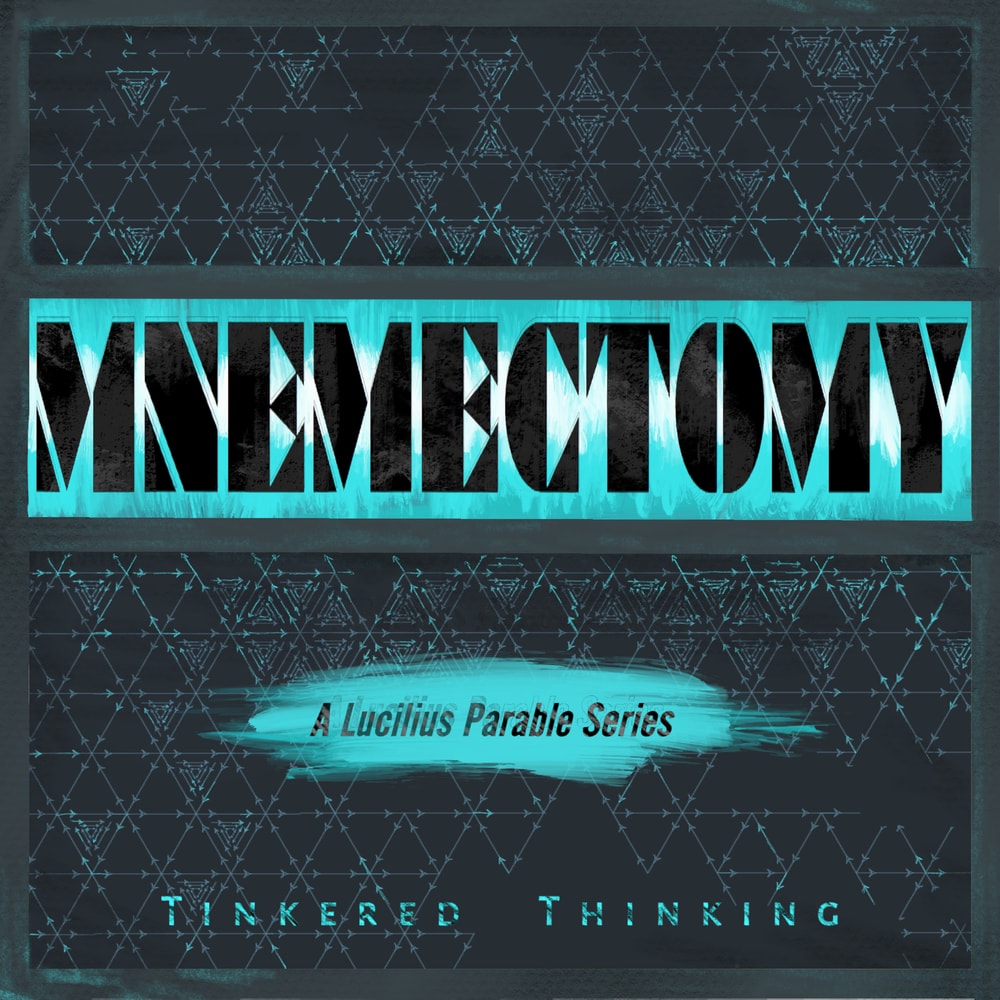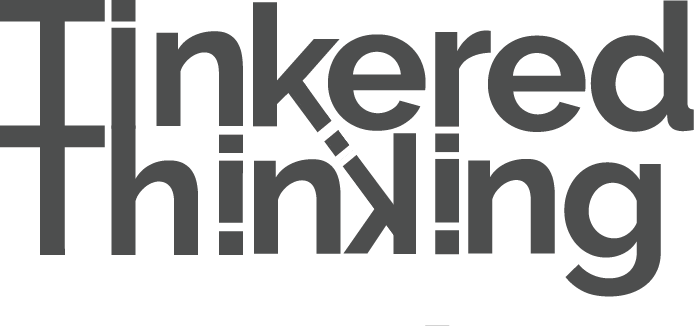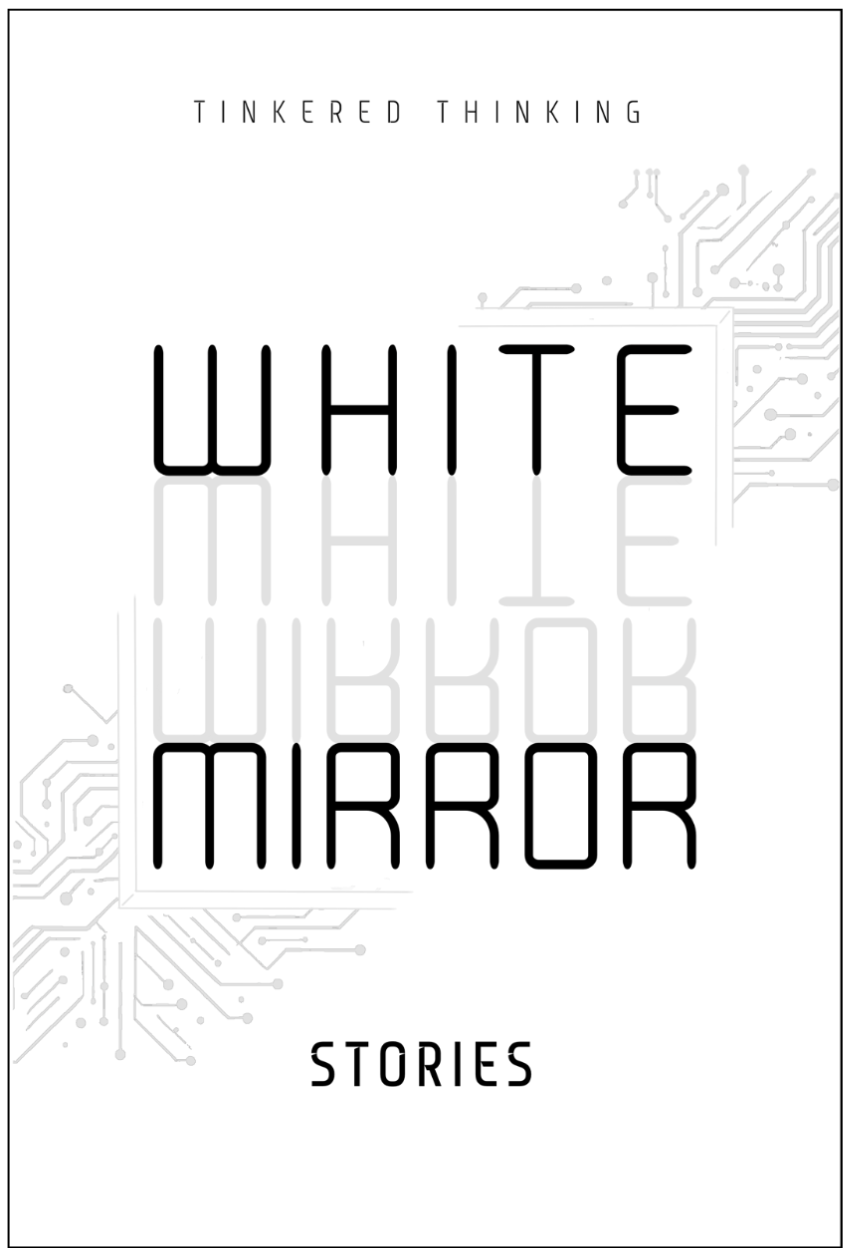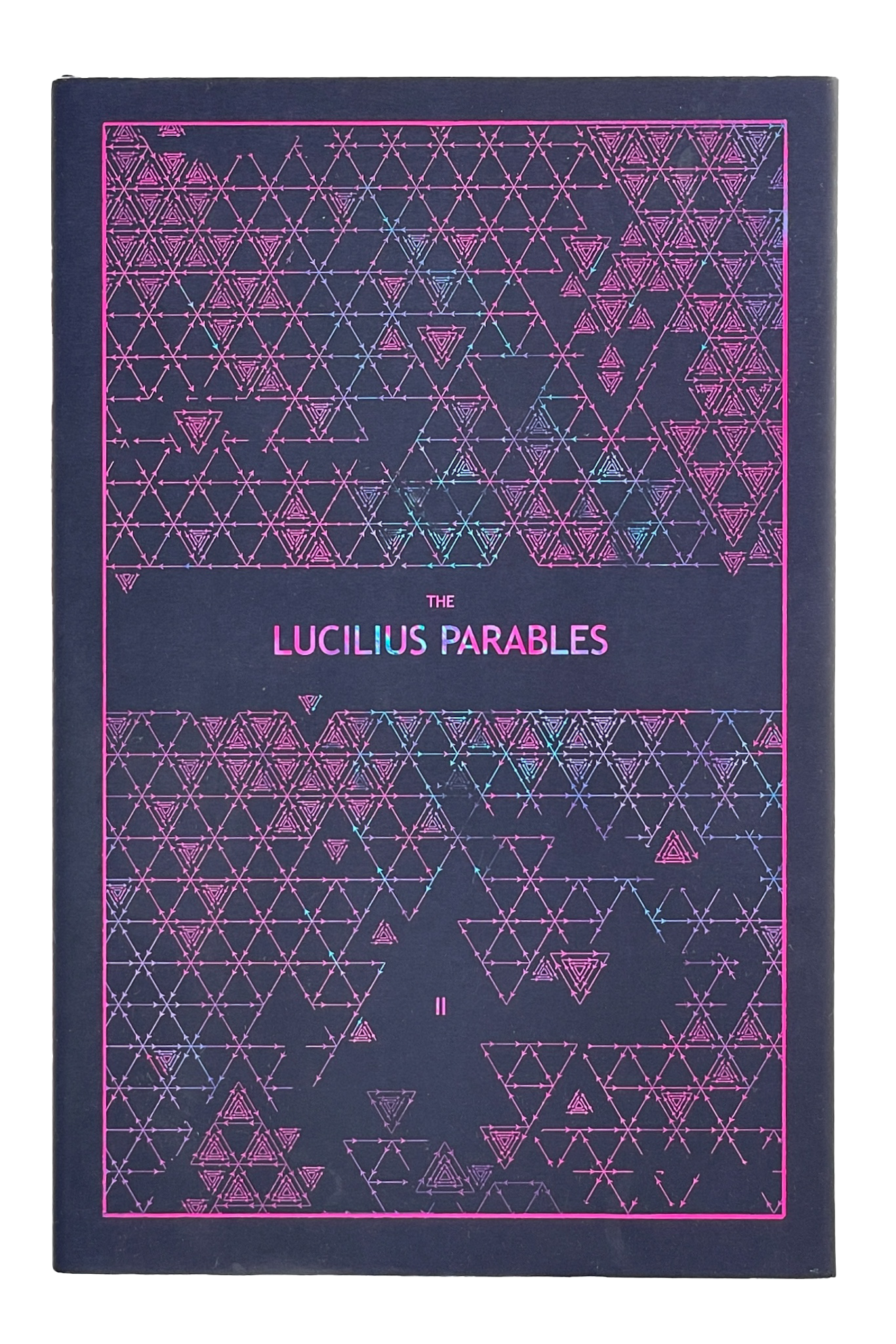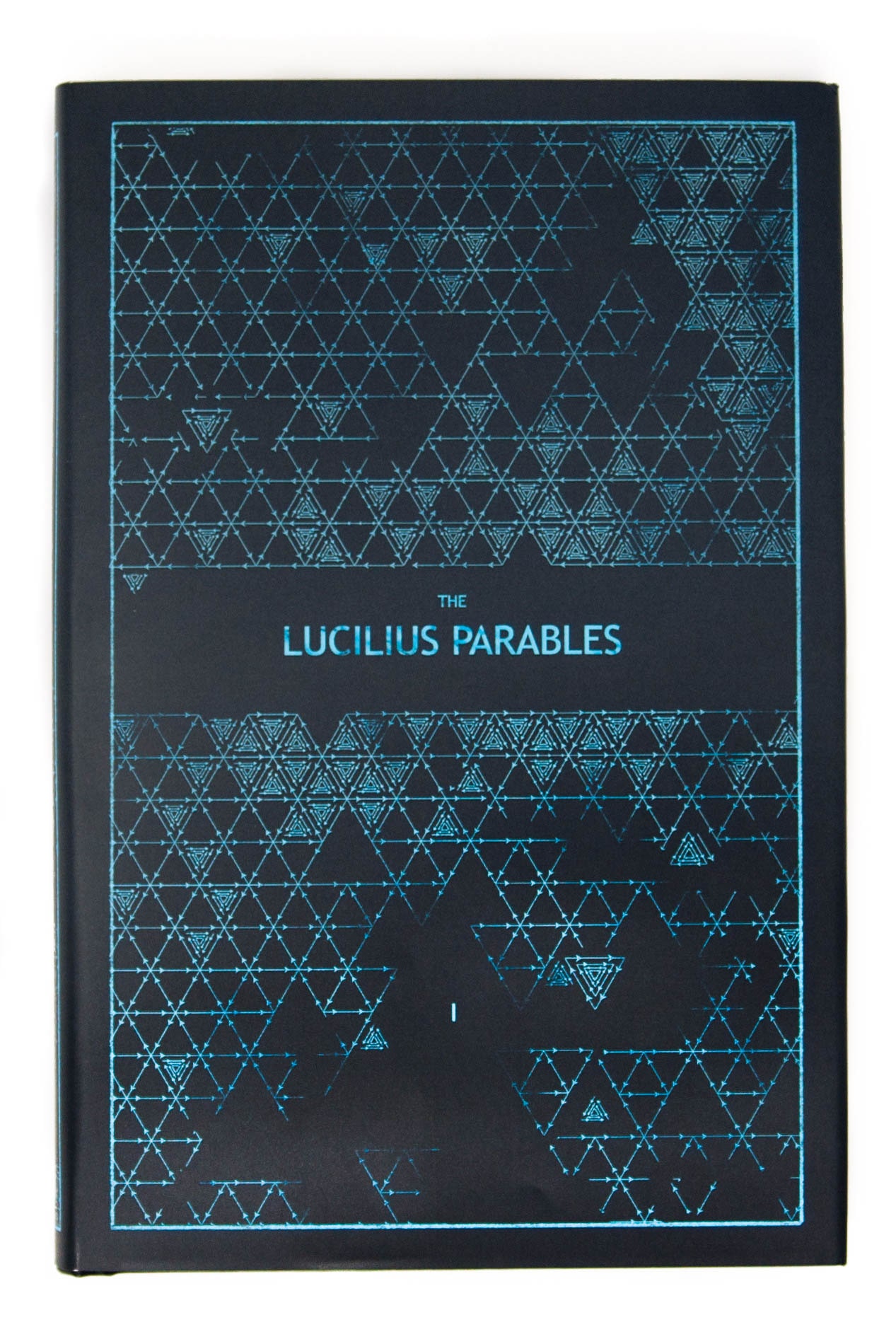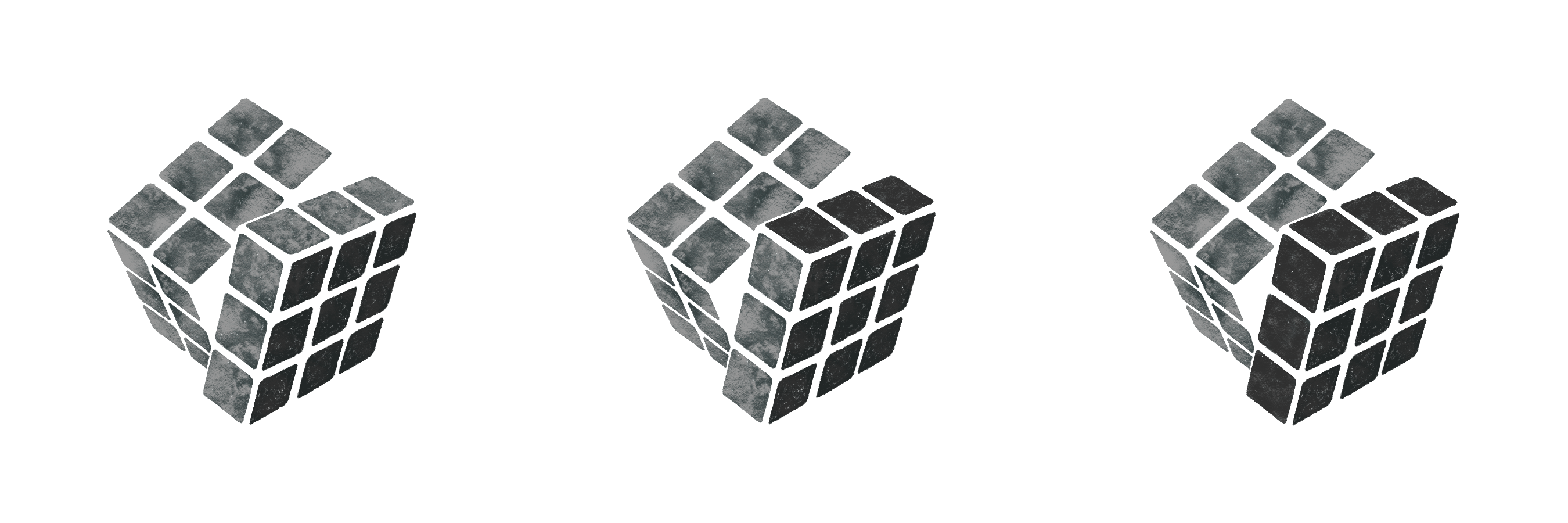Daily, snackable writings to spur changes in thinking.
Building a blueprint for a better brain by tinkering with the code.
subscribe
rss Feeds
SPIN CHESS
A Chess app from Tinkered Thinking featuring a variant of chess that bridges all skill levels!
REPAUSE
A meditation app is forthcoming. Stay Tuned.
INITIATE DERANGEMENT
January 3rd, 2023
One concept explored on this blog is the idea of Rivalnyms. These are words or word pairs that in short seem like synonyms from one perspective and antonyms from another. A few examples are stubborn vs. determined, or Influence vs. Manipulation, or Loneliness vs Solitude. Both words in effect are two sides of the same coin, or concept. Their main difference is that one is connotatively positive and one is negative. We have these word choices for single concepts in order to flavor it with our emotion or opinion. If you approve of someone’s efforts you call them determined. If you disapprove, you might call them stubborn. It’s not an exact science, but that’s the thing with language: it’s a shifting ground of nuance. So the idea of a Rivalnym is more to point out the emotive way we conjugate our meaning when we say things or categorize them.
This sort of double-edge is present everywhere and culture is plastered with it. It’s perhaps controversial to say but much mental illness may have been beneficial in past cultural circumstances. Reading any ancient religious text with a secular mindset, for example, might make a person wonder if a schizophrenic may have been hailed as a prophet back in those times. Either the divine acts that people saw back then cease to occur today, or perhaps we just label the people who still see them a bit differently… This is the dark side of the double-edge I’m trying to point at.
A more positive version might be everyone’s obsession with “flow state”. This is the hallowed state of productivity that everyone is constantly trying to induce, experience, leverage and bask in. But a flow state is a little nutty. I have experienced the flow state many times, with many projects and endeavors, and on a very practical level I have to say: it’s absolutely horrible for your sleep. Countless times I’ve worked single-mindedly straight through the night only to be annoyingly distracted by a weird and unexpected brightness coming through the window. It’s only then that I realize I’ve accidentally pulled an all-nighter.
There’s something…downright manic about a flow state. At least in my experience the normal person I am seems to get swallowed whole by this completely other state of being. Tiredness, hunger… it’s as though these things cower in the corner of my being, afraid to disturb the raging beast hellbent at the controls of my person, charging towards that single point of success distantly imagined. The best part about it is that this single point of success is often something I’ve never actually done before. It’s an imagined point of success. And the hypnotism that characterizes this state is fueled by a conviction that is more like faith than anything else. It’s a faith that this completely imagined point of success actually exists. A faith that I can navigate the swirling fog of confusion and unknown in order to hurl a harpoon into that elusive creature and haul it into the light of now.
When a project is in full swing, these manic states of productivity can be nearly all consuming. Collapsing to sleep, waking up with next steps already lined up in the brain, as though it never stopped and being awake is just a matter of tuning back into the conversation.
These periods of life are - wonderful. There are few things better than them. So much seems to happen, even though it feels as though it takes too long, and achievement - actually getting something substantial and novel finished and shipped - it feels as though the precious life used up during that time was not wasted.
The tricky thing is that inducing such periods of manic productivity.. isn’t necessarily a matter of flipping a switch. I’m currently facing a looming need to cast myself wholesale back into such a frenzy of productivity and I find it not unlike the days and hours before taking a very strong psychedelic compound. There’s a foreboding, and a resistance from my body. The same that you feel as a child when approaching the top of a very tall slide or roller coaster. But unlike a psychedelic compound which is simply ingested and guarantees the ride will commence, a flurry of productivity can be tricky to activate if there’s no boss breathing down your neck. It’s a necessity of the imagination. The results might have very real implications for one’s real world life, but if it’s a novel project, it certainly still exists as a figment of imagination. Perhaps at that point it’s a matter of faith more than anything. Can that novel idea actually exist? It all depends on whether you can pull it off.
My suspicion is that it’s like anything else and it’s a matter of momentum. Just start, and do a little bit today. Do a little more tomorrow. And keep that up until sleep is the day’s only bookends, bursting with that project bloating those waking hours.
So. Here’s to getting a little bit more done. Tomorrow.
MEDITATION DRAFT SESSION 7: THE MIND'S MOVIE
January 2nd, 2023
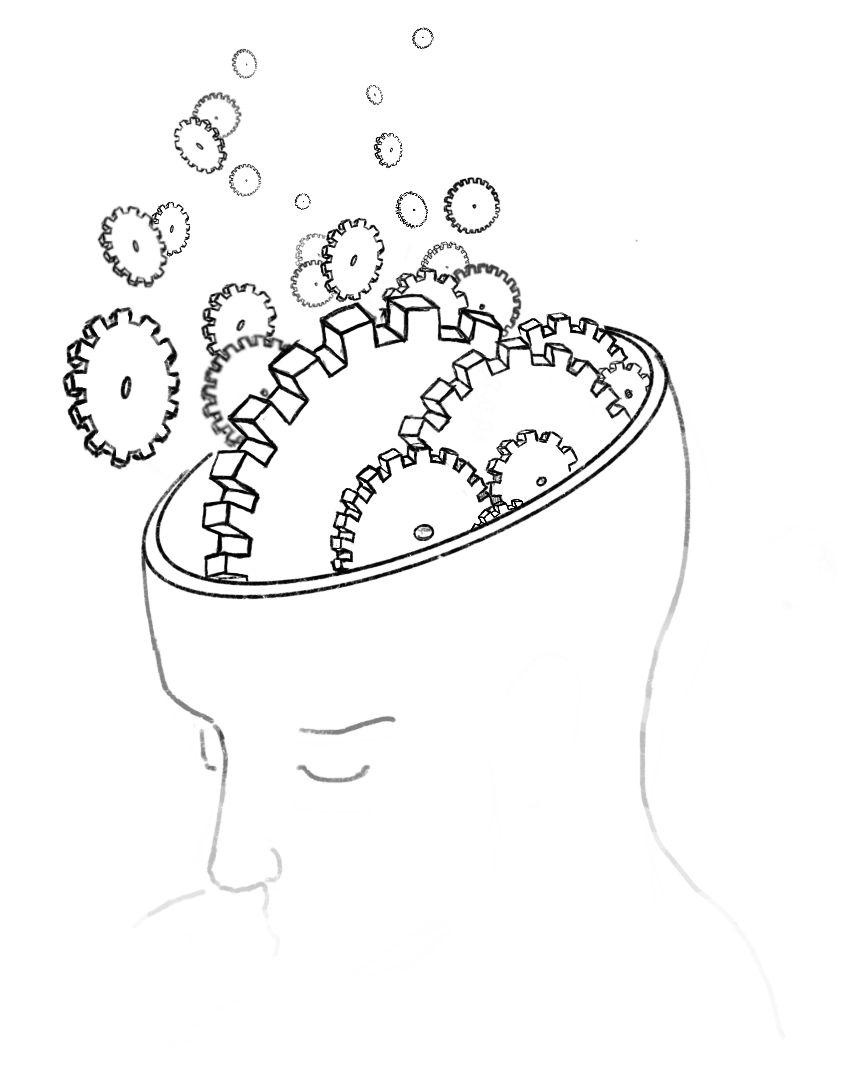
On Monday Tinkered Thinking releases a draft of a lesson from the forthcoming meditation app, currently called The Tinkered Mind (If you can think of a better name, please reach out. I'm not crazy about the current one, but I'll be damned if I let an imperfect name keep me from developing a good idea.) The rationale here is simply to stave off project stagnation by taking a wish to work with words on a daily basis (Tinkered Thinking Posts) and combine it with adjacent projects. This also gives regular readers a chance to get a preview of what I'm cooking up and to get feedback before the app launches, which is a tactic that has proved extremely useful with other projects unrelated to Tinkered Thinking.
One further introductory note: The goal of this meditation app is predominantly aimed at helping individuals build a robust daily habit by breaking that habit down and tackling it's consitituent parts one at a time and aiding the process with a new and innovative way of tracking progress, the likes of which has not been seen in other meditation apps or habit tracking apps.
Again, if you have any feedback, please reach out via Twitter
Session 7: The Mind's Movie
Take a moment to sit and arrange your posture. Maintain a straight back with plenty of space for the abdomen to expand.
Once you’re ready begin breathing with deep exhales. We want a relatively quick inhale and a slow, longer exhale. I’ll count out a few 4 count inhales followed by exhales with a count of 8
Inhale till 4, starting on
1 - 2 - 3 - 4
hold for a moment and then exhale
8 - 7 - 6 - 5 - 4 - 3 - 2 -1
Then..
Inhale again till 4, starting on
1 - 2 - 3 - 4
hold for a moment and then exhale
8 - 7 - 6 - 5 - 4 - 3 - 2 -1
Continue this for a couple more breaths, and feel free to allow the exhales to be as long as you want. And once you are ready let your breathing transition to coherence breathing where inhales and exhales are the same length.
There’s a preconception surrounding meditation that with the practice we are trying to achieve a certain state, like a kind of trance, much like the flow state while engrossed in fulfilling work or perhaps while watching a good movie. While meditation is about cultivating states of mind, it’s much the opposite of this cultural notion of a trance or flow.
Most of normal waking life is far from this state of alert focus. Usually we are lost in thought, either engrossed with some aspect of the past, be it some embarrassment, mistake or replayed memory, or it’s the future we wonder and worry about. We play a near constant movie in our minds which is a never ending montage swirling both past and future together, and it’s only occasionally interrupted by the present for brief periods of time.
A mindfulness practice seeks to interrupt the mind’s movie and expand those moments when the present floods in.
It’s one thing to be fully present for some rare occasion in life, say for the birth of a child, or a child’s graduation, or the last moments of a loved one’s life. These are moments that are so stimulating that it can be difficult NOT to be fully aware of what’s going on in the present. But compare these super-stimulating moments to the boring ones: waiting in line at the bank, or sitting on a bus, or waiting to fall asleep while tossing and turning. During these parts of life we’re usually lost in thought, and the mind’s faucet can seem impossible to turn off.
And now imagine being as acutely aware of the present and its myriad details during those boring moments of life as if they were as engrossing as the more spectacular moments.
The quality of our experience has little to do with what is happening to us or around us. Rather, it’s all about how we perceive the present moment, whether we embrace it with the full faculty of our focus and attention or recede from it into memory and imagination.
The practice of mindfulness meditation develops a cognitive muscle to help reengage with the present moment. In a very real sense, it’s an exercise in simply not missing out on your own life.
For some this can maybe sound a little scary: to confront the mind without the comfort of some mindless entertainment or pleasure to drown it out. Some people claim: I have too many thoughts, and I just need to get away from them for a little while.
This kind of sentiment is totally understandable, but the stereotypical strategy for handling it doesn’t actually address the issue, it only pushes it to a side for a little while, which is more like treating the symptom instead of the cause. And in fact, the ability to recognize an overabundance of thought is in itself a first step of mindfulness, which we explored a little in the last session. It’s a recognition of what’s going on with the mind - that there’s a movie in the mind that seems like it won’t end.
But the mental training that comes with a mindfulness practice forms a kind of Pause Button which we can use to put the mind at ease and allow for the present moment to fill our experience.
Now, let’s transition from coherence breathing back to deep exhales, and try to notice any thoughts that pop up as we go through out counts.
Inhale till 4, starting on
1 - 2 - 3 - 4
hold for a moment and then exhale
8 - 7 - 6 - 5 - 4 - 3 - 2 -1
Then..
Inhale again till 4, starting on
1 - 2 - 3 - 4
hold for a moment and then exhale
8 - 7 - 6 - 5 - 4 - 3 - 2 -1
Continue like this for a few more moments while the session ends.
A LUCILIUS PARABLE: REBOOT/RENEW
January 1st, 2023
After a month Lucilius woke up. He breathed deeply and sat up, and saw himself in the mirror. He stood and walked toward it until he was standing face-to-face with himself. He looked at the skin of his face. Raise a hand to it and felt how smooth it was. He smiled, watching the change, then moved his expression through a series of extremes: surprise and fright, sadness and delight. All the while watching how his face changed. He laughed and shook his head, amazed. He didn’t look a day older than 16 years old.
He checked out of the facility and started to jog home. He’d gotten a ride to the facility but feeling so limber, with so much energy, it felt as though his body just wanted to run. So he did.
And while he glided along, taking route by the water along the city, his mind drifted back to the work that waited for him. The work he’d been at for many years now. Progress had slowed and slowed until it was clear the demising returns pointed at only one thing: Lucilius wasn’t going to figure out how to finish the project. He knew the subject, the field so well, but as he’d aged and as the project has grown in complexity, his thinking only seemed to solidify. Of course he discovered new and useful data, but there was something he sensed about the mental acrobatics required that finally made him take the plunge.
This was how most people were handling long term projects, and the method was discovered by accident. It had long been known that the flavor of intelligence a person has changes over time. In youth intelligence is fluid, depending on a powerful short term memory, but as humans age fluid intelligence eventually gives way to crystalized intelligence, one that operates based on a vast array of knowledge and expertise. But anti-aging tech had been undertaken for more obvious reasons: being young - the ultimate products a draw for everyone.
What people discovered though, was when they returned to their projects and problems after anti-aging therapy, it was often accompanied with incredible breakthroughs. It became clear very quickly what was happening. It wasn’t just the bodies of these people that was going back in age, the very structure of their brains were effected, and the once lost fluid intelligence was regained, but the memories of long study and work were still retained. By regenerating their bodies and minds people were able to see old problems with fresh perspectives, contorting and twisting ideas in ways they’d never considered.
Many people now, Lucilius included, now used anti-aging and age-forwarding as methods to fast track progress on projects. Depending on what stage a project was in, people were calibrating their biological clock to best fit with the style and flavor of thinking required.
Lucilius was extremely old by this point, but he ran with his body now looking and performing like the 16 year old he once was so many years ago.
It felt good to run, and by the time he was finally home he’d gone over the project in his mind. He didn’t even stop to take a shower, he immediately pulled the project up on holographic digi-screens, raised his hands and started ripping components apart, spinning them, and reassembling. Vast conduits of information and function ceased, severed and rebound before him, and he smiled, finally seeing the solution that he’d been missing.
LEGITIMATE ADVENTURE
December 28th, 2022
Adventure is a cute word. It’s used with children and it’s the stuff of fairy tales and action movies. It’s a quaint concept on the surface, but only because so few people actually take the idea seriously. No, seriously, is your life turning out to be a legitimate adventure?
Well, what would that mean? What are the components of an adventure?When scraped of all potential gravity, it’s something we think of as fun. But is adventure fun all the time? Think of your favorite adventure stories. Was the hero always having a blast?
Not at all. And this is perhaps the hallmark of adventure: it’s hard. There are challenges so overwhelming that they often put the hero’s very life at risk. Could anything be less superficial?
Modern life is so replete with comfort and safety that the very notion of life being “at risk” is so foreign, so utterly removed from the norm that adventure, as a result, is a concept most people cannot properly fathom. How many times has your life quite literally hung in the balance? Or how about the times when life was truly uncomfortable - not due to stress, like financials and relationships, but when you were so cold you were worried you might not wake up? Or when you literally could not figure out a way out of a situation? Trapped in a glacier? Or met with oncoming trucks in both lanes of a highway?
Likely most people have a moment or two that they can recall when life drew to a pinch in a wholly unexpected and nerve-wracking way. But how many people set up their lives with a goal that requires venturing into risky situations? Certainly law enforcement and military falls into this category, and perhaps the converse of crime life and hard drugs..but outside of these extremes, legitimate adventure can be hard to come by. Short of becoming a homeless ascetic, life is equipped with soft bumpers on all sides. Caution notices that point out absurd safety measures. Danger is practically, literally, outlawed. So what kind of lives does this situation leave us to live. Do we have as many options that were on offer 200 years ago? 500? 10,000?
We were a nomadic species, gathering food and hunting enormous beasts, twisting the raw components of our environment to ingenious advantage. And now we squeeze our souls into the confines of tedious jobs and flimsy relationships.
Part of this can be solved with reframing. We don’t battle the enormous dragon with a sword. Those are analogs for far less flashy items: the dragon is an ethereal force dragging you down, and the sword is often just discipline, perseverance and perhaps a dash of ingenuity required to recognize one of the rare ways to leverage some asymmetric advantage in this cluttered and complex world. The fairy-tale-video-game analogy is best reversed though. It’s better to see life’s obstacles (debt, depressing job, toxic relationships) as the dragon, as the puzzle-temple to solve. The magic of life is lost in its bland tedium and nacring over our eyes with a flashy analog can help rustle up ancient reserves of creative determination. Imagine your life, not by the stale terms we define it with, but as a patch work constellation in the mythic form, the way a child might see it. But even then, don’t forget that legitimate adventure is always on offer. It’s just no longer the default, as it once was when our species was clawing at the face of reality just to survive and a chance to thrive. In fact, the real adventure hidden in and around the normal safe facets of life may in fact be the only way to thrive.
MEDITATION DRAFT SESSION 6: FAILURE IS IDEAL
December 26th, 2022

On Monday Tinkered Thinking releases a draft of a lesson from the forthcoming meditation app, currently called The Tinkered Mind (If you can think of a better name, please reach out. I'm not crazy about the current one, but I'll be damned if I let an imperfect name keep me from developing a good idea.) The rationale here is simply to stave off project stagnation by taking a wish to work with words on a daily basis (Tinkered Thinking Posts) and combine it with adjacent projects. This also gives regular readers a chance to get a preview of what I'm cooking up and to get feedback before the app launches, which is a tactic that has proved extremely useful with other projects unrelated to Tinkered Thinking.
One further introductory note: The goal of this meditation app is predominantly aimed at helping individuals build a robust daily habit by breaking that habit down and tackling it's consitituent parts one at a time and aiding the process with a new and innovative way of tracking progress, the likes of which has not been seen in other meditation apps or habit tracking apps.
Again, if you have any feedback, please reach out via Twitter
Session 6: Failure is Ideal
Take a moment to sit and arrange your posture. Maintain a straight back with plenty of space for the abdomen to expand and do your best to stick to the posture instructions while seeking comfort. There is a sweet spot that will arise when the crossed legs and the back all sink into a place that feels simultaneously strong and relaxed.
Once you’re ready begin breathing with deep exhales. Again, the idea is to have a relatively quick inhale and a slow, longer exhale. I’ll count out a few 4 count inhales followed by exhales with a count of 8
Inhale till 4, starting on
1 - 2 - 3 - 4
hold for a moment and then exhale
8 - 7 - 6 - 5 - 4 - 3 - 2 -1
Then..
Inhale again till 4, starting on
1 - 2 - 3 - 4
hold for a moment and then exhale
8 - 7 - 6 - 5 - 4 - 3 - 2 -1
Continue this for a couple more breaths, and feel free to allow the exhales to be as long as you want. And once you are ready let your breathing transition to coherence breathing where inhales and exhales are the same length.
So when do we get to the meditating? You may have wondered this over the last couple days while we get a few foundational habit rolling. Today we’ll attempt to engage with a mindfulness exercise, and as the title of the session implies, the idea here is to fail.
This isn’t a trick or a quaint and contradictory repackaging designed to glide under the radar. We are very deliberately going to seek out a very specific instance of failure.
Popular preconceptions of meditation maintain a notion of a mind that is somehow serene and empty, devoid of thought and emotion - a perfectly inert place. This sort of idea needs to be pushed aside for the time being. The aim here is to develop a very practical ability to instantiate instances of mindfulness.
Say for example we are going to spend 15 seconds concentrating solely on the breath. With this kind of task there’s a clear condition for suggest and failure. But instead of success, we are aiming to detect failure. So during the 15 seconds of silence that we will engage with, do try to focus on the slow even rise and fall of the breath. But, most importantly, be on the looking out for thoughts that pop up that have nothing to do with focusing on the breath. Remember, there is no need to shun these thoughts or feel negative in anyway that they occur. Just gently attempt to bring the mind back to the breath. Enjoy the next 15 seconds of breathing and see if at the end you can identify one single thought that was off topic.
15 SECONDS OF SILENCE
So how did you do? Were you able to focus solely on your inhales and exhales during that 15 seconds or was there a stray thought or two… or three that crept in?
Perhaps you are a rare individual and you were able to maintain focus solely on the breath for this brief period of time. If that’s the case I suggest setting the silent timer for an hour, after this session and seeing if any thoughts pop up during this time.
Otherwise, it’s more likely that thoughts did pop up, but it was so subtle you didn’t even notice you were having the thought. This is what’s happening most of the time during our waking lives. It’s actually much like a dream - thoughts are happening and we don’t even realize they are happening.
If you were able to detect a thought, and at the end of those 15 seconds you were able to recognize: oh, I had a thought about this, or that, then congratulations, you succeeded in the simple task of noticing failure.
This is what the bulk of mindfulness training entails in the beginning - simply noticing that your mind is preoccupied with some sort of thought. The preoccupation and presence of a thought can be thought of as a “failure” to focus on the right thing, but the simple ability to simply recognize that the thought is present and in the way of the real object of focus is mindfulness!
It’s almost as if we develop a second attention. One that takes a bird’s eye view of the mind and which can eventually see quite quickly and swiftly that the mind has become distracted. Many people seem to think of meditation as a kind of flow state - where the mind is in a single unchanging state for some period of time. But it’s better to think of it as quite the opposite: as a very active period when you are on guard to notice what happens in the mind. Each thought that pops up is like a weed that we need to pull. Or it can even be like a game of Hungry Hungry Hippos where thoughts are popping up left and right. Most of the time we are simply oblivious as if hypnotized by all the commotion. But in the beginning, mindfulness is a very active process of noticing thoughts and recognizing them as they emerge.
Even as you are hearing these words, there’s likely a whole commotion of thought bubbling up around each syllable and sentence as you are reminded of other things or as distractions and worries bubble up.
So let’s engage with another 15 seconds of silence and try to see how many times the mind wanders off the task of focusing on the breath, starting now.
15 SECONDS OF SILENCE
Perhaps you noticed a few more thoughts this time? In the beginning it’s quite likely that the mind is absolutely buzzing, and if you only notice one thought, or if you can barely pay attention to a single inhalation without thoughts flooding your experience, that’s completely ok. Noticing just one stray thought during these periods of silence is a fundamental success.
One useful way to think of this business of thoughts and the sheer number of them that can exist is to think of them all as a huge backlog of thoughts you haven’t given proper space and attention to. In a way, thoughts are a lot like children. Anyone who has spent significant time with children knows that a child is almost constantly trying to get an adult’s attention, and often that’s all they need. Once we give them a little of our time, attention and energy, they seem satisfied and get back to their play. Thoughts are just like this. They can bubble around the periphery of our consciousness, causing stress and tension, but once we notice and deliberately recognize the thought, poof, it vanishes. So imagine an enormous backlog of thoughts like this. Like a long line of children who are all waiting to get a little slice of your attention, but who let you be once they’ve got it.
Instead of seeing the near constant stream of thoughts that crop up as somehow being bad or failing at meditation or mindfulness, see it instead as the main work. Your task is simply to notice each thought and give them a tiny bit of attention until they vanish and you can go back to focusing on the object of attention you wish to have - in our case, focusing on the breath. After enough sessions doing this, the backlog of thoughts will thin, and grow small. Now, it certainly replenishes, but if we can remain consistent and deliberate in our practice, we eventually get through the backlog of thoughts and then we experience these brief and lovely instances of being present. This doesn’t happen overnight, but in time these instances of peaceful presence grow larger and more numerous, and eventually it becomes something we can invoke at will during any part of our day. It becomes a muscle that we train daily which we can use when anger flares up unexpectedly, or when we wish to sink deeper into a pleasant experience.
But most importantly remember this takes time. Tt’s why there is such an emphasis in this program to aim for a long term habit of meditation. This isn’t a weekend get-away, it’s not a spa treatment, it’s more like cleaning house - a house that has never been cleaned, and that takes time and deliberate attention. So there’s absolutely no reason to beat yourself up or think you are “bad” at meditation if the silence we explore here seems to leave you drowning in thoughts. That is completely fine and it’s expected. In fact it should raise some suspicion if it’s not the case. If it doesn’t seem like you have many thoughts, then it’s likely they are not getting noticed at all. This simple and subtle act of noticing a thought can take time to find and get good at. It’s a bit like noticing a dream. Few can do it and it rarely happens spontaneously. Luckily, thoughts are a little more explicit because we can consciously invoke them, and often do.
Now, as this session wraps up, let’s transition from coherence breathing back to deep exhales, and try to notice any thoughts that pop up as we go through out counts.
Inhale till 4, starting on
1 - 2 - 3 - 4
hold for a moment and then exhale
8 - 7 - 6 - 5 - 4 - 3 - 2 -1
Then..
Inhale again till 4, starting on
1 - 2 - 3 - 4
hold for a moment and then exhale
8 - 7 - 6 - 5 - 4 - 3 - 2 -1
Continue like this for a few more moments while the session ends and think about how these simple breathing techniques are something you can carry with you through out the day - practices you can use whenever you need a sense of clarity and calm.
-compressed.jpg)
